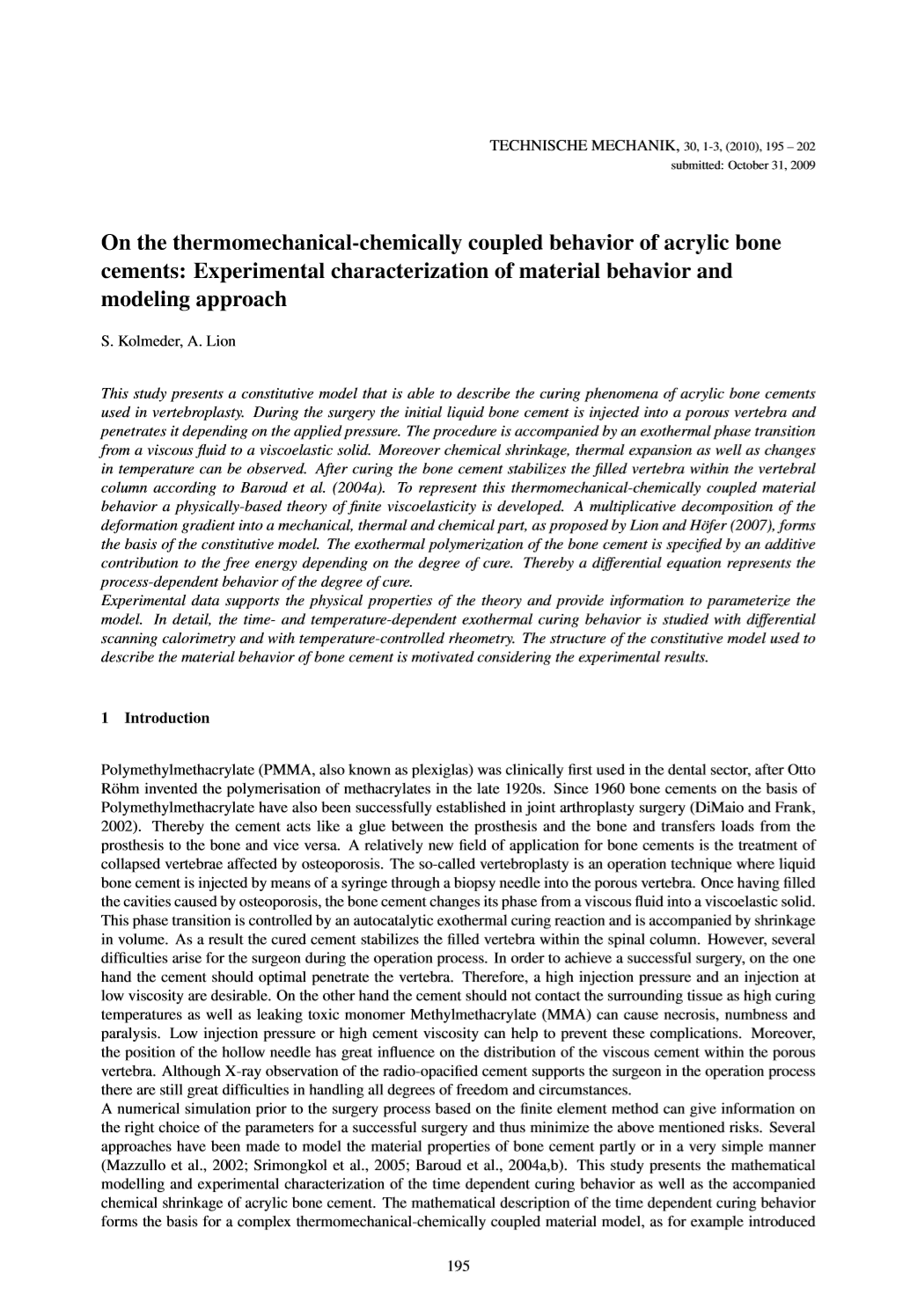On the thermomechanical-chemically coupled behavior of acrylic bone cements
Experimental characterization of material behavior and modeling approach
Abstract
This study presents a constitutive model that is able to describe the curing phenomena of acrylic bone cements used in vertebroplasty. During the surgery the initial liquid bone cement is injected into a porous vertebra and penetrates it depending on the applied pressure. The procedure is accompanied by an exothermal phase transition from a viscous fluid to a viscoelastic solid. Moreover chemical shrinkage, thermal expansion as well as changes in temperature can be observed. After curing the bone cement stabilizes the filled vertebra within the vertebral column according to Baroud et al. (2004a). To represent this thermomechanical-chemically coupled material behavior a physically-based theory of finite viscoelasticity is developed. A multiplicative decomposition of the deformation gradient into a mechanical, thermal and chemical part, as proposed by Lion and H¨ofer (2007), forms the basis of the constitutive model. The exothermal polymerization of the bone cement is specified by an additive contribution to the free energy depending on the degree of cure. Thereby a differential equation represents the process-dependent behavior of the degree of cure. Experimental data supports the physical properties of the theory and provide information to parameterize the model. In detail, the time- and temperature-dependent exothermal curing behavior is studied with differential scanning calorimetry and with temperature-controlled rheometry. The structure of the constitutive model used to describe the material behavior of bone cement is motivated considering the experimental results.





